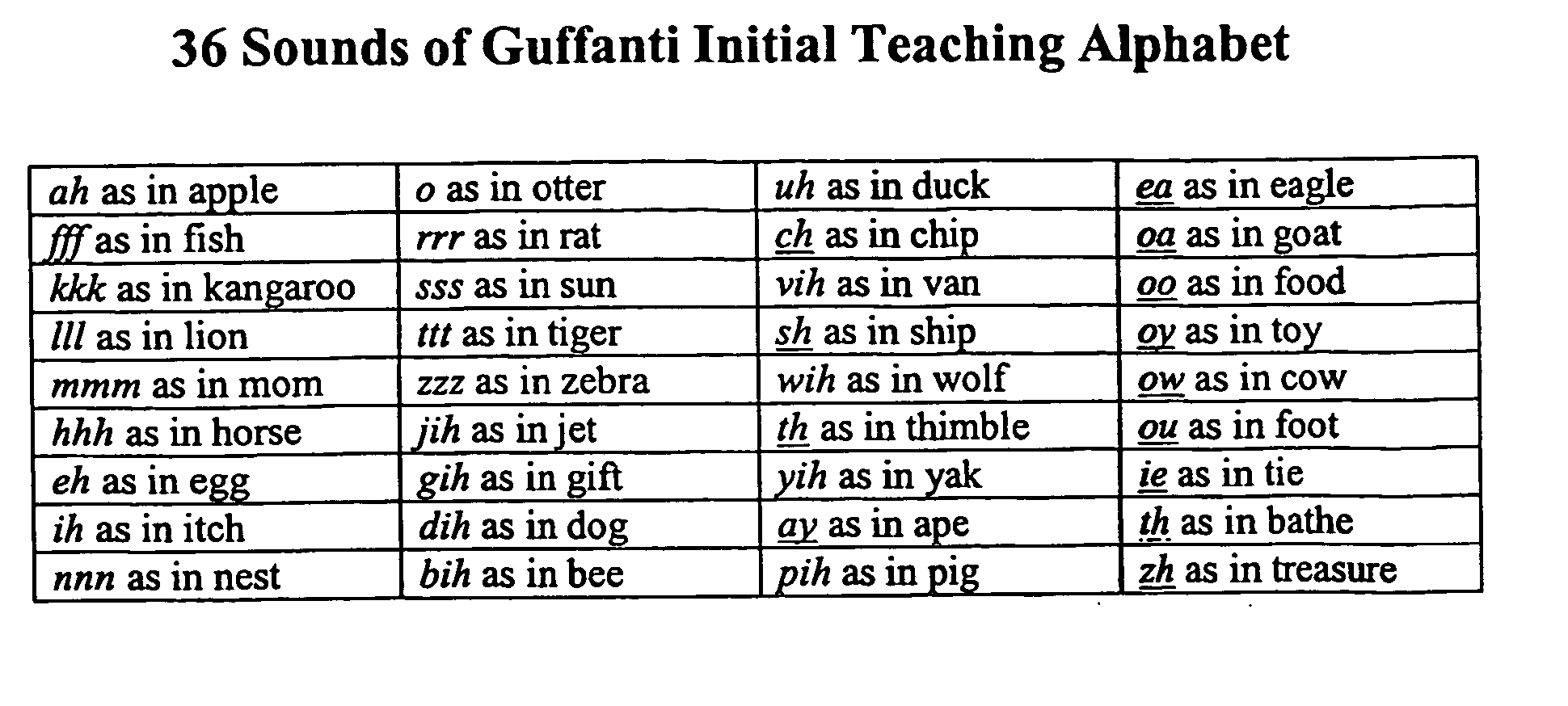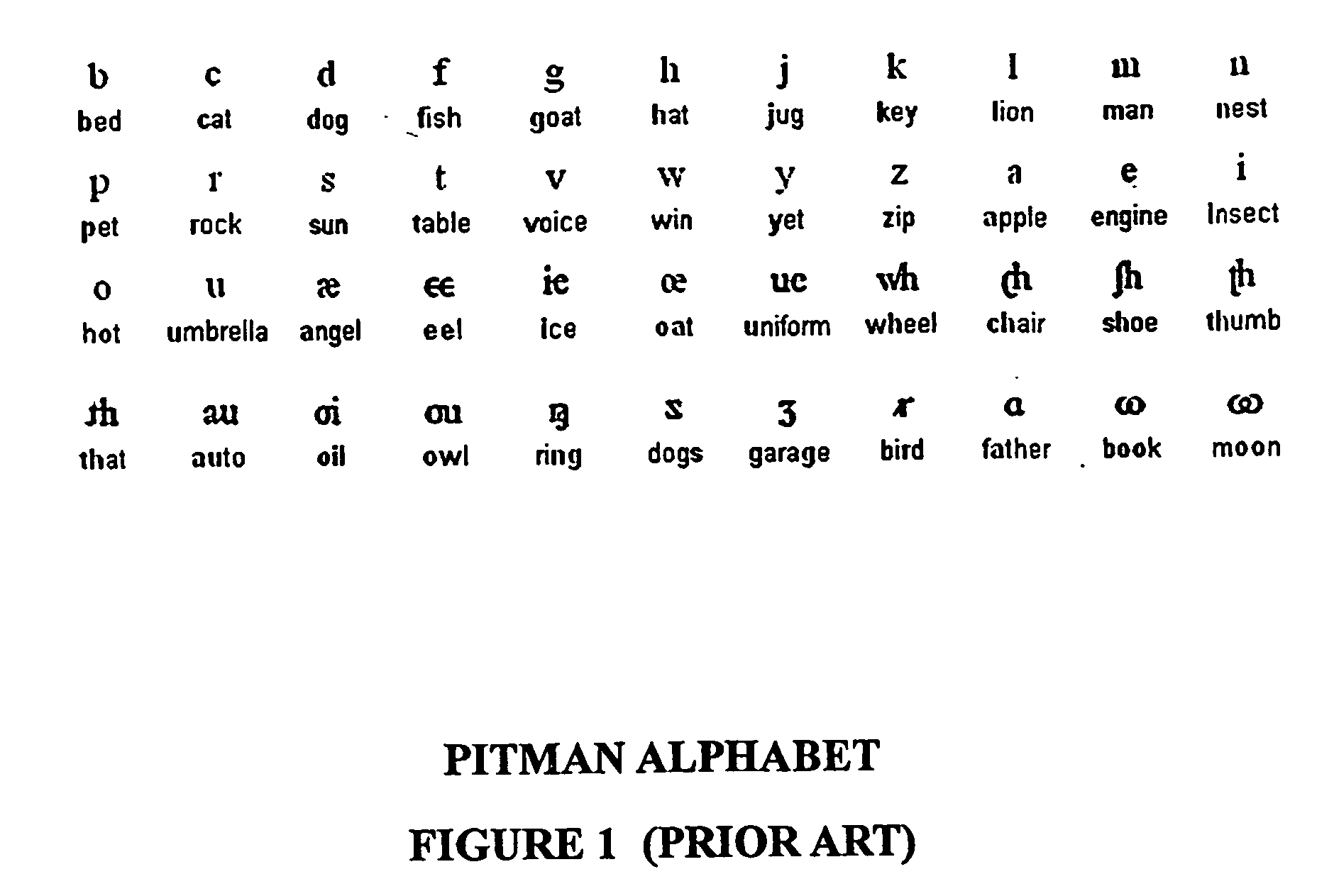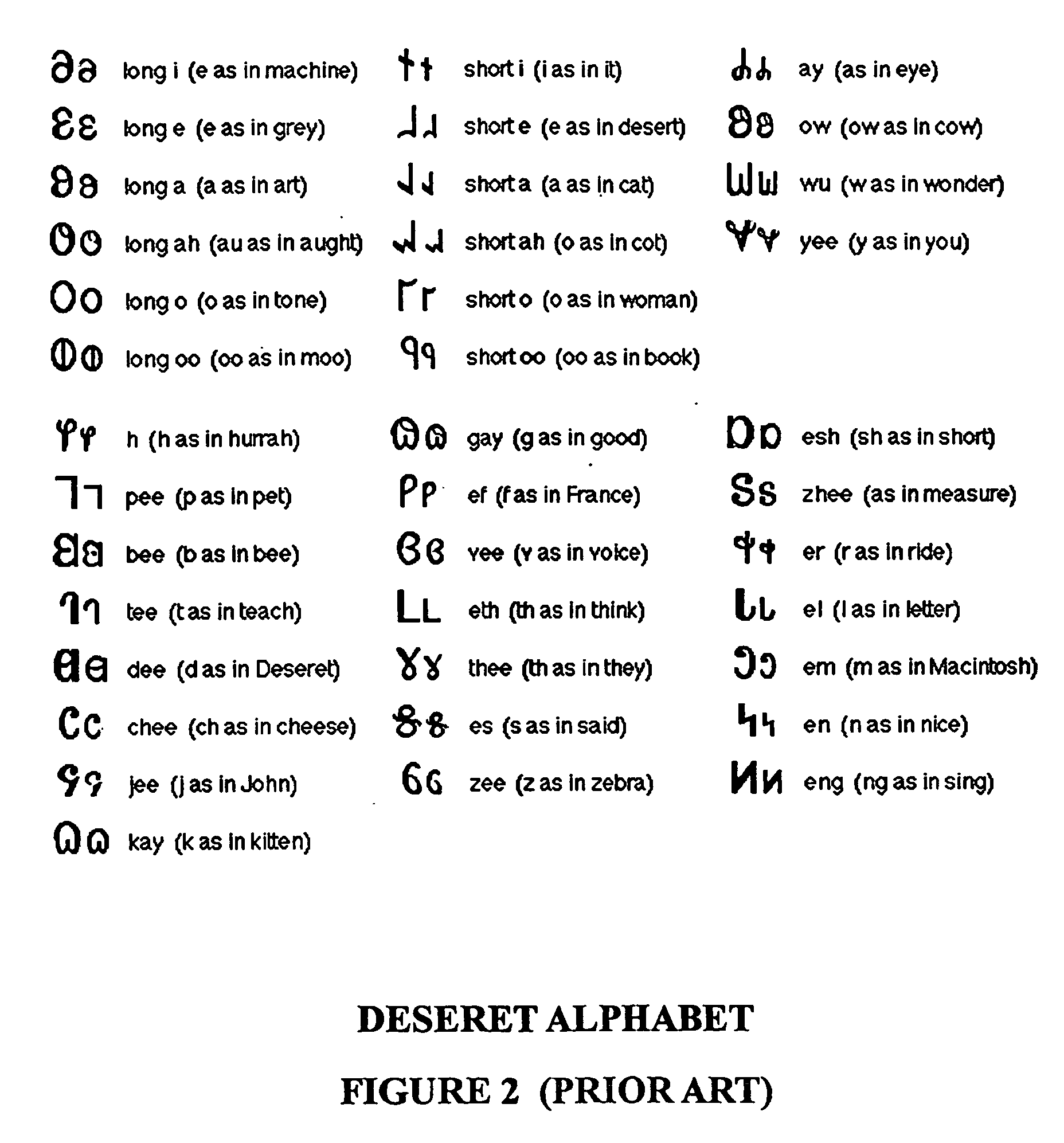Initial teaching alphabet for teaching phonetics
a phonetic and alphabet technology, applied in the field ofphonics, can solve the problems of disputes, significant defeat of the original simple correlation between letters and sounds, and difficulty in teaching children and adults
- Summary
- Abstract
- Description
- Claims
- Application Information
AI Technical Summary
Benefits of technology
Problems solved by technology
Method used
Image
Examples
Embodiment Construction
[0036] The preferred Initial Teaching Alphabet, along with related materials and methods comprise a system, which for the time being is completed to be marketed under the rubric “Rocket Phonics™”. Other names may be employed over time for the entire system or parts thereof, but for convenience the name Rocket Phonics™ is used herein from time to time as shorthand for the entire system as currently developed.
[0037] The goal of Rocket Phonics™ is to create independent readers; readers who can recognize and comprehend in print most of their spoken vocabulary. Since reading is often taught to children and students, the terms “child” and “student” are used herein interchangeably to refer to any person using some or all of the system to learn reading skills. Those terms, however, should be construed herein as euphemisms that includes all persons using the system regardless of age or occupation.
[0038] Rocket Phonics™ generally has a three-step approach: (1) teach a preferred initial teac...
PUM
 Login to View More
Login to View More Abstract
Description
Claims
Application Information
 Login to View More
Login to View More - R&D
- Intellectual Property
- Life Sciences
- Materials
- Tech Scout
- Unparalleled Data Quality
- Higher Quality Content
- 60% Fewer Hallucinations
Browse by: Latest US Patents, China's latest patents, Technical Efficacy Thesaurus, Application Domain, Technology Topic, Popular Technical Reports.
© 2025 PatSnap. All rights reserved.Legal|Privacy policy|Modern Slavery Act Transparency Statement|Sitemap|About US| Contact US: help@patsnap.com



